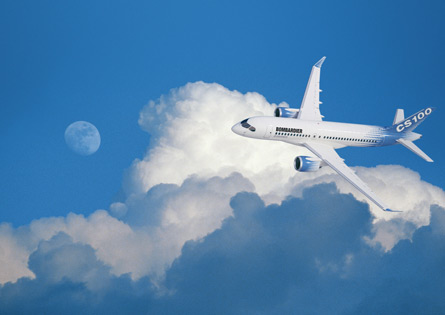Russia's economic revival is leading to rising demand for air travel, illustrated by passenger numbers in 2011 matching post Soviet-era levels for the first time in more than two decades.
"We saw double-digit growth in holiday flights last year - after 20 years we finally got to 60 million passengers," says Alexander Rubtsov, general director of leasing company Ilyushin Finance (IFC).
While this increase is welcome news for Russia's aerospace industry, it also represents a major challenge: namely, how to efficiently replace many of the remaining communist-era airliners still being operated within and outside the country's massive territory.
The need comes at a difficult time for IFC, as the company is still working its way through a process to transform an ownership structure now dominated by United Aircraft (UAC).
"There is a conflict of interest at the moment, as UAC owns 49%," Rubtsov says. "From the point of view of the airlines, it would be better to be closer to the banks than the manufacturing community," he adds, as the company would gain easier access to operating funds and have more freedom in the choice of aircraft it can offer to the market.
Talks with Russia's Vnesheconombank (VEB) have been ongoing for more than two years, with its stake to potentially rise from 21% to perhaps 70-75%. "We are slowly advancing to bring IFC into the VEB group," Rubtsov says. "It should be okayed by the end of the summer."
Another problem stems from the inability of Russian industry to keep pace with demand for a new generation of products.
"Since 1999 we have focused solely on Russian equipment," says Rubtsov, who has headed IFC since its formation in the same year. Types placed by the company include Ilyushin Il-96s, Tupolev Tu-204s and Antonov An-148 passenger aircraft, plus Tu-204s, Il-96s and An-124 freighters.
"We have sold more than 44 aircraft to different customers in this time, and still have 34 on our books," Rubtsov says.
Delays with the 210-seat Tu-204SM led the lessor to drop its interest in the product, and it is waiting for Irkut's MS-21 to reach the market instead.
"We hope that this airplane will be a game-changer in narrowbodies," Rubtsov says. IFC's early belief in the aircraft's potential led it to sign a firm order for 28 -300 examples at the Moscow air show last August, and to take options on a further 22. Deliveries will run between 2019 and 2022.
The Sukhoi Superjet 100 is also of interest, and "could be an excellent complement to the MS-21". IFC is now "discussing seriously" a possible 20-aircraft deal for the SSJ 100, although Rubtsov notes: "My feeling is that today's airplane needs to be stretched a bit, perhaps to around 110 seats."
Also on the cards is a proposed deal to acquire about 30 of Bombardier's CSeries product. "We are working very hard with Bombardier to finalise a contract," says Rubtsov, who was expecting to send a proposal to the IFC board in the run-up to the Farnborough air show. "We are quite satisfied with the progress they are making so far," he adds.
 |
|---|
Bombardier An order for 30 Bombarier CSeries may well be made |
Since late 2011, Moscow has offered operators subsidies worth up to 30% of an aircraft's lease cost in a bid to spur modernisation. The initiative was launched in response to the crash of a Yakovlev Yak-42 in Yaroslavl in September 2011, in which 44 people were killed. "This is really important for regional airlines," Rubtsov says. "Without this support it would be almost impossible to sell or place any new airplane."
Another urgent requirement is to introduce many new turboprop-powered aircraft to replace aged types and also meet increased demand in Russia's remote regions. IFC is pushing to secure government support for the segment, which it forecasts could require 50 or 60 aircraft each in the 20- and 50-seat categories, plus between 30 and 40 with a 35-seat capacity. "With the development of the economy, we could see that number double," Rubtsov says.
"We are working with Bombardier, ATR, Antonov and Ilyushin to select the best types for this market," he says, also identifying the Czech manufacturer of the L-410.
IFC is also looking to regions including the CIS and Latin America to grow its business activities. "In 10 years' time we would like to have a portfolio of 140 aircraft," Rubtsov says. "At the moment we are number 31 out of the top 50 lessors. Our goal is to get closer to the top 10."
Source: Flight International























